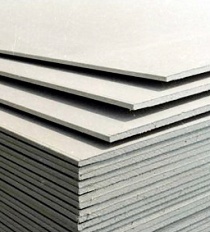
<span lang="en">120 years ago, American Sackett received a patent for drywall
 |
The idea of combining plaster, a traditional and non-flammable building material, with paper was much better. The two entrepreneurs achieved their first successes as early as 1888, and six years later they patented the drywall board. At the turn of the 19th and 20th centuries, factories for drywall appeared all over the United States, and construction companies also favored the new material. The entry of the USA into World War I in 1917 provided a significant boost to Sackett's invention, as it began to be used for barracks construction.
Outside of America, however, the invention was only slowly gaining acceptance, as Europeans preferred traditional building materials. It was only in the late 1930s that drywall was experimented with in Germany, and a breakthrough came after World War II when the war-torn old continent needed to quickly build hundreds of thousands of apartments due to population growth. Drywall spread to the Czech Republic after November 1989.
The English translation is powered by AI tool. Switch to Czech to view the original text source.
0 comments
add comment










